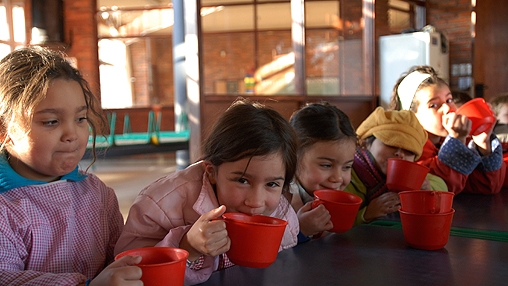"When I grow up I want to be a programmer", "I want to be a veterinarian", "I, an international chef". Sixth grade students of the public school No. 70 raised their hands and waited their turn to answer. In the classroom there were those who wanted to be doctors, architects or lawyers and who also let their imagination fly and dared to dream of being a writer, archaeologist, guitarist or a crime scene investigator. The school is the first step to achieve this.
Almost 100% of Uruguayan children attend school. A census conducted last May revealed that in 2011 the public education system in Uruguay served 360,695 children, which represents 81% of total national enrollment. This number includes kids coming from families of all socioeconomic strata. The rest attend private institutions.
Being poor or rich, living in this or that neighborhood, does it matter when talking about education?
According to a national study about learning in primary education in Uruguay, the socioeconomic status of households affects the quality of children's learning. The document says that in a "very favorable" environment (households very well equipped and highly educated mothers), 85% of children reached levels of proficiency in Language and 66% in Mathematics, while in a context " very unfavorable" (lack of assets in their homes and mothers with at least full primary education), the results of proficiency were 37% and 17%, respectively.
This study was conducted several years ago, but remains valid if one considers that more than 200,000 children from 0 to 12 years in Uruguay are under the poverty line, according to the National Statistics Institute.
Uruguay faces this situation, through the implementation of the Project to Support Uruguayan Public School (PAEPU), coordinated by the Preschool and Primary Education Council (CEIP) and the Central Directive Council of Education (CODICEN) of the National Administration for Public Education (ANEP) with financial support from the World Bank.
More educational opportunities
Currently the project –that was launched in 1994- is in its third phase, but soon it will begin a new stage, after the approval last September of a new World Bank loan of US$ 40 million. "This is the answer to one of the Uruguayan Government’s concern:betting that all children have the greatest educational possibilities," said Diego Ambasz, education specialist at the World Bank, and project task team leader.

